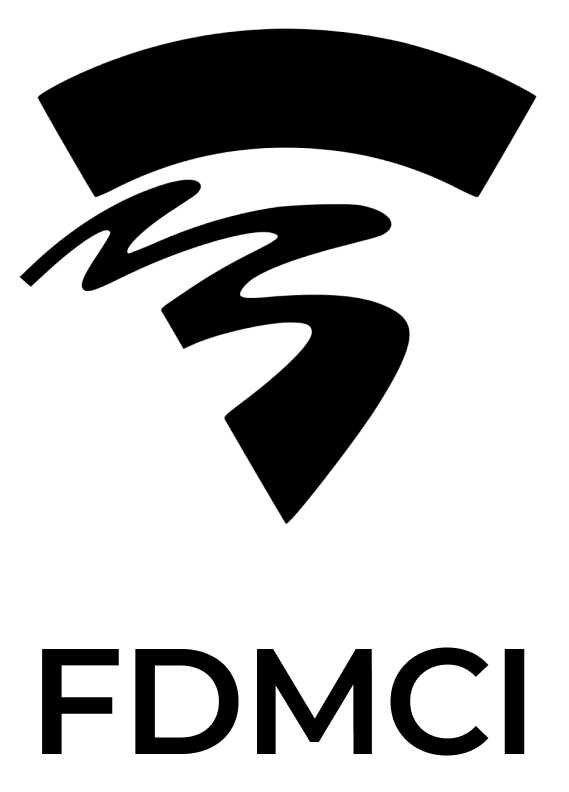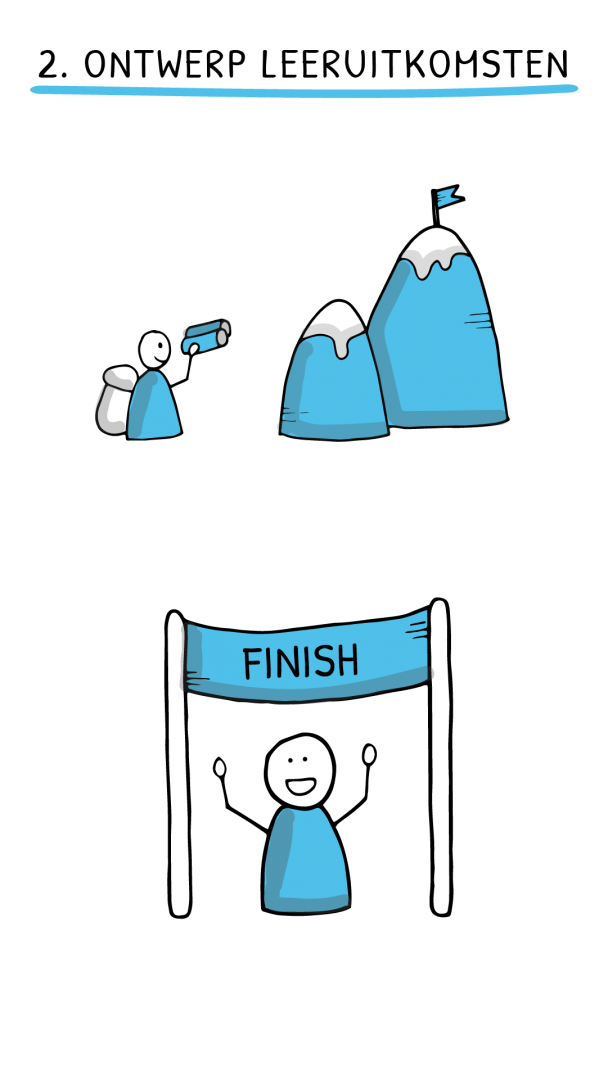Development of Learning Objectives
What should students be able to do after having completed this course?
This is the one question that should guide your creation of learning objectives.
Learning objectives focus on the destination, not the journey. This allows students to be more independent and flexible in how they their goals within your course. Students can receive feedback about their current status and use this information to set milestones in order to reach their destination.
Many courses use learning goals. It should be stressed that learning goals, as opposed to learning objectives, are more specific and outline the type of testing use to assess students’ progress.
Read more about the difference between learning objectives and learning objectives on the website vernieuwenderwijs (Unfortunately only available in Dutch. A similar English website can be found here.)
Why?
During their studies, students receive guidance and training which ultimately will lead them towards pre-defined graduation-criteria. A carefully designed programme utilises the graduation criteria to guide students towards mastering key themes and skills throughout their studies. Each course has its individual leaning goals, that in the bigger picture, work together to support the overreaching learning objectives of the degree programme. Didactical methods such as teaching styles, choice of learning activities and assessments at the end of each course are all developed in line with the criteria set by each study programme.
What?
1. Decide on the sub-steps towards the end-qualification
This analysis determines the outline of the module. The target audience, year of study and place in the curriculum further define the level of depth the module needs.
In the article “Developing a module” the focus is on analysing the situational factors in which the module is given: Where in the curriculum is the module located? To whom is it given? What is its content?
The analysis of these elements determines, what the student is working on, at which level of difficulty, and how this level relates to the final qualifications of the module. The level of mastery depends on the target group, the year of study or the place in the curriculum. Learning outcomes formulated in a way that is independent of the learning pathway also make it possible to design learning paths in a more flexible and demand-oriented way and to better attune them to the development of students. Remember that you can expect more of students in their 4th year than in their 1st year on any given topic.
|
Type of tasks
|
Type of context
|
Level of independence | |
| Niveau I (propedeuse) |
|
|
|
| Niveau II (Main) |
|
|
|
| Niveau III (Graduation) |
|
|
|
2. Determine the desired end-goal
Note down students’ knowledge and abilities after they completed the module.
- Determine preliminary learning objectives and check whether they cover the whole module. Rule of thumb: One learning outcome is at least 3 ECTS. Depending on the module it can also be 15 ECTS.
- Use taxonomies that help you with creating your learning objectives such as Tuning, Bloom, Dee Fink, SOLO, Miller’s Pyramid of Assessment or others that are recommended by your degree programme.
- Remember a good learning goal consists of at minimum three parts:
- An action verb for a behaviour (to be observed and evaluated);
- The content and the subject of the behaviour; and
- A concrete context in which the behaviour (a) should take place.
- Only use one action verb and proficiency level per learning goal. Higher-order levels always include lower-level skills.
- Ensure the learning objectives build upon one another but allow each outcome to also stand on its own
- Try to envision the student who fulfil the learning outcome. Check this image with colleagues so you can gauge if you know the application of your learning objectives in the ‘real world’ and with the examination board.
3. Phrase the learning objectives
Use a taxonomy that is common within your degree programme.
With help from the Tuningsystematik you can work out the learning objectives, step-by-step, following their system.
| Section | Description |
| Verb | Action that describes the behaviour of the students to be evaluated. (Use the verbs that are also used by the Taxonomy). |
| Type |
Which type of learning outcome is this? Knowledge, cognitive or practical skills, or competences?
|
| Subject |
Which knowledge, skills and attitudes is the student asked to master?
|
| Standard | Standard – Methods and theories from the working field the student has to master to reach the desired learning outcome |
| Context |
The complexity of the situation
|
Example:
[The student has] demonstrated capability to address a research problem, retrieving the appropriate sources and bibliography, and giving critical, narrative form his/her findings in a text of around 60 pages.

http://tuningacademy.org/wp-content/uploads/2014/02/A-Guide-to-Formulating-DPP_EN.pdf
How?
The article ‘Developing a module’ underpinned the creation of a solid foundation, content and target group for your module. This is your basis to formulate your learning goals.
There are different taxonomies and methods you can employ to create learning objectives and learning goals. Perhaps your programme already has chosen a specific one. You can think of:
Three examples of Learning Objectives
The first two are examples of a learning outcome as you see mostly in the first year. The second is an example of a learning outcome as you see more often as students progress with their study. It is common to formulate a learning outcome in the final year in a less concrete and more complex way than in the first year: more and more is coming together, and you do not want to end up with a learning outcome of 20 sentences.
Note: this is not required and depends entirely on how the study is structured. Does your program mainly use learning objectives within a course? In the article ‘Designing Assessments’ you find how to formulate learning objectives.
- A student will treat burn victims according to first aid guidelines.
- A student has developed the practical ability to test and improve web page interaction in a simulated situation using Javascript. The student programs according to the specified standards.
- The student recognizes the factors important in health maintenance over the life course and can apply them in analyzing the risk of health problems. This involves the use of current literature.
Once you have formulated the learning objectives, the next step is to think about the assessment of (part of) the learning objectives.

